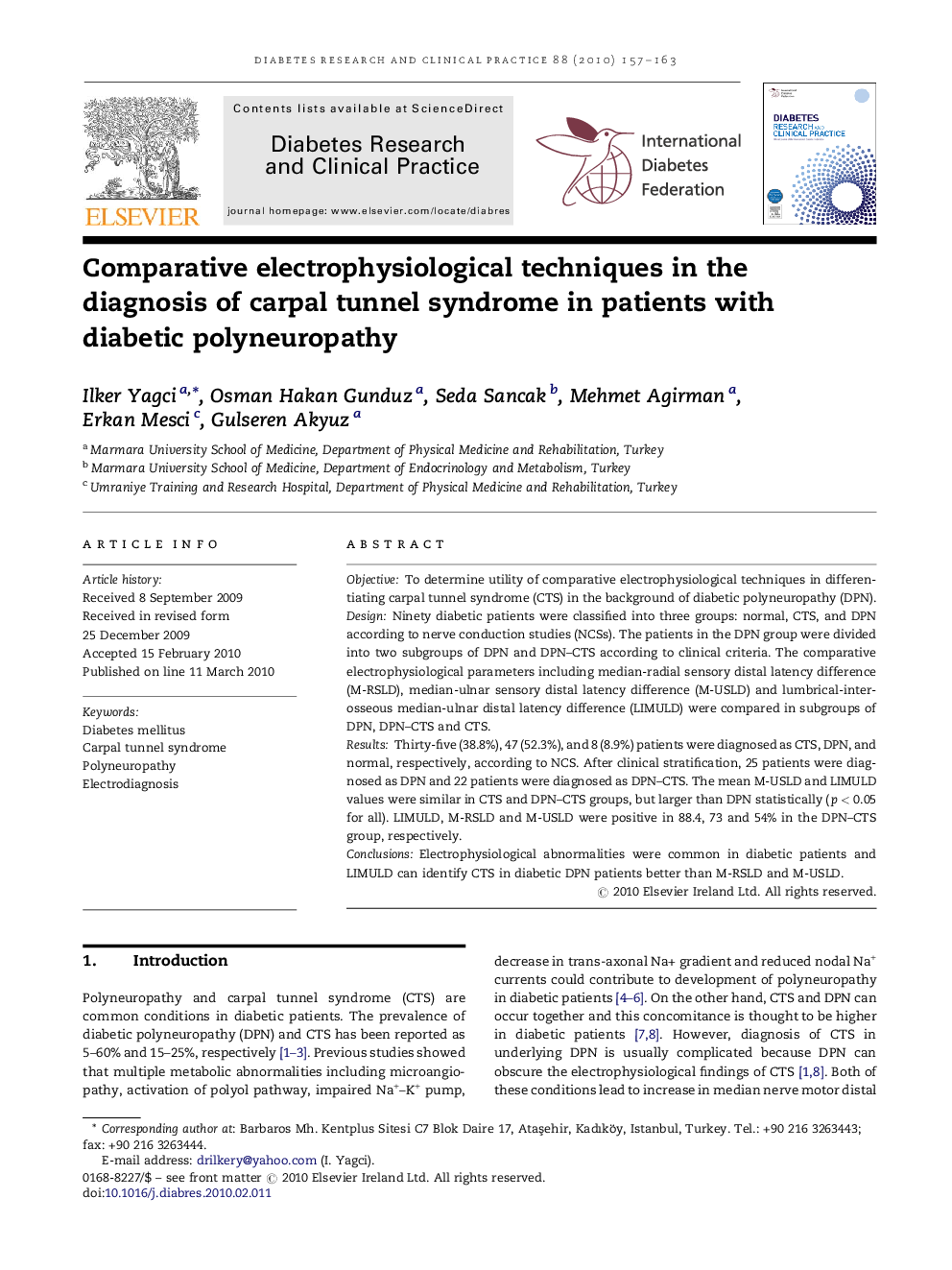| کد مقاله | کد نشریه | سال انتشار | مقاله انگلیسی | نسخه تمام متن |
|---|---|---|---|---|
| 2797527 | 1155656 | 2010 | 7 صفحه PDF | دانلود رایگان |

ObjectiveTo determine utility of comparative electrophysiological techniques in differentiating carpal tunnel syndrome (CTS) in the background of diabetic polyneuropathy (DPN).DesignNinety diabetic patients were classified into three groups: normal, CTS, and DPN according to nerve conduction studies (NCSs). The patients in the DPN group were divided into two subgroups of DPN and DPN–CTS according to clinical criteria. The comparative electrophysiological parameters including median-radial sensory distal latency difference (M-RSLD), median-ulnar sensory distal latency difference (M-USLD) and lumbrical-interosseous median-ulnar distal latency difference (LIMULD) were compared in subgroups of DPN, DPN–CTS and CTS.ResultsThirty-five (38.8%), 47 (52.3%), and 8 (8.9%) patients were diagnosed as CTS, DPN, and normal, respectively, according to NCS. After clinical stratification, 25 patients were diagnosed as DPN and 22 patients were diagnosed as DPN–CTS. The mean M-USLD and LIMULD values were similar in CTS and DPN–CTS groups, but larger than DPN statistically (p < 0.05 for all). LIMULD, M-RSLD and M-USLD were positive in 88.4, 73 and 54% in the DPN–CTS group, respectively.ConclusionsElectrophysiological abnormalities were common in diabetic patients and LIMULD can identify CTS in diabetic DPN patients better than M-RSLD and M-USLD.
Journal: Diabetes Research and Clinical Practice - Volume 88, Issue 2, May 2010, Pages 157–163